.jpg?width=657&name=Glossier-Community-Decoded_%20(1).jpg)
Welcome to the first episode of Community Decoded! Our new blog series for brands who want to build and grow their brand community.
Every month, we'll analyze the greatest brand communities and break down 5 things their community does best. As more brands shift to community-building, marketers want to learn what works (and what doesn't). We hope these quick overviews help you find a few ideas to test for your own brand.
The Glossier beauty community
For our first episode, we're diving deep into one of today's most successful community-driven brands: Glossier.
If you’re a beauty & skincare or DTC fan, the brand needs no introduction. What started as a beauty blog, grew into a $1.2B company, thanks to a passionate fanbase who spread the word and co-created best-selling products.
1. Co-creating products with superfans
Glossier is most famous in the industry for how effectively they leveraged Into The Gloss beauty blog readers for crowd-sourcing and product co-creation.
A typical product-sourcing post gets 300+ detailed comments. This feedback then informs product, packaging, copy and ad campaign decisions.
Quick example: when sourcing their best-selling moisturizer, Glossier wanted to go with jars for the packaging. Feedback from customers suggested jars were viewed as less hygienic, and the brand went with a pump. Other feedbacks they integrated was related to preferred products, texture and ingredients.
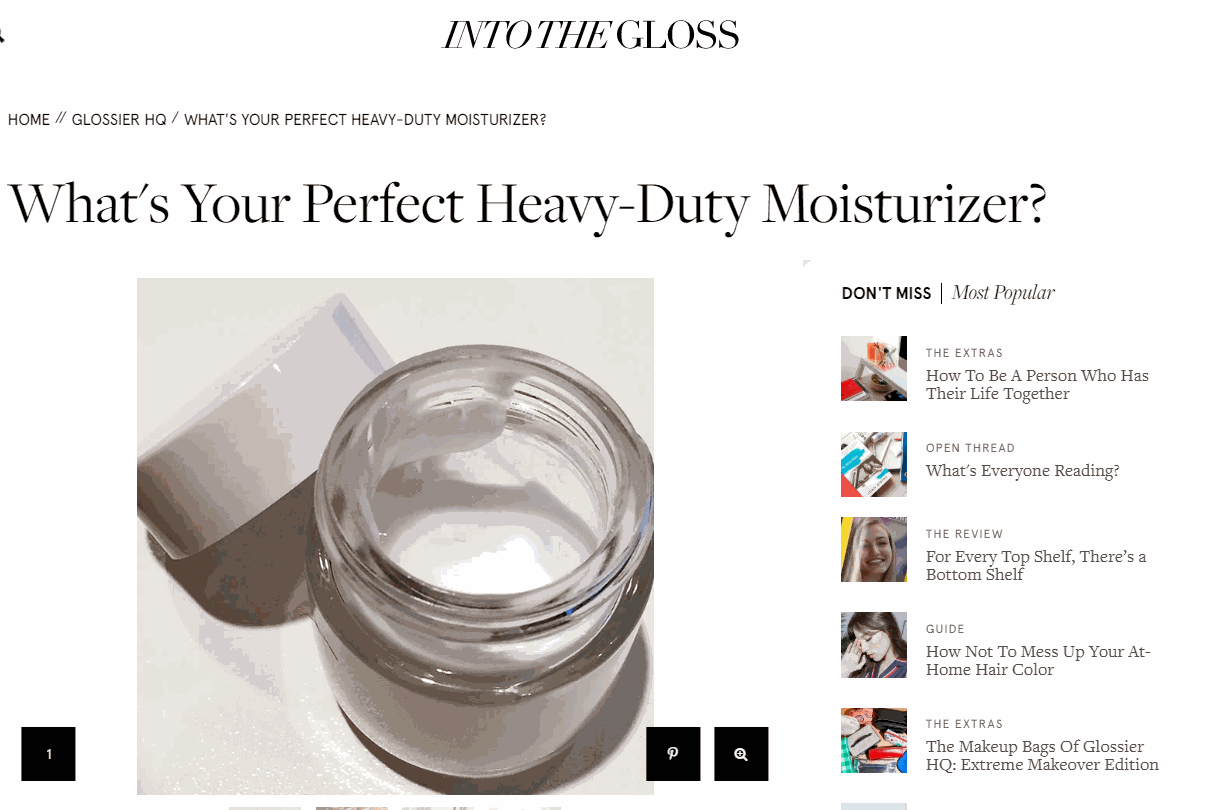
Good news is, you don't need a popular blog to start doing this.
Brands like Monki (H&M) and Superdrug are constantly polling their communities on social media to adapt their website, communication, social campaigns and featured products.
In our latest Brand Q&A, Monki's Head of Social Commerce told us how they've been using direct community feedback to continuously adapt communications during the COVID-19 lockdown.
2. Turning loyal customers into reps
Reps isn't a new concept in retail, especially in the beauty industry. But Glossier's version is - unsurprisingly - more community-driven than most.
The brand selects loyal fans that fit their brand and have an existing - albeit small -social media following (most of them have between 300 and 5,000 followers). Reps share their skincare routine and favorite products on their profile page. Their custom link gives new shoppers 10% off their first order.
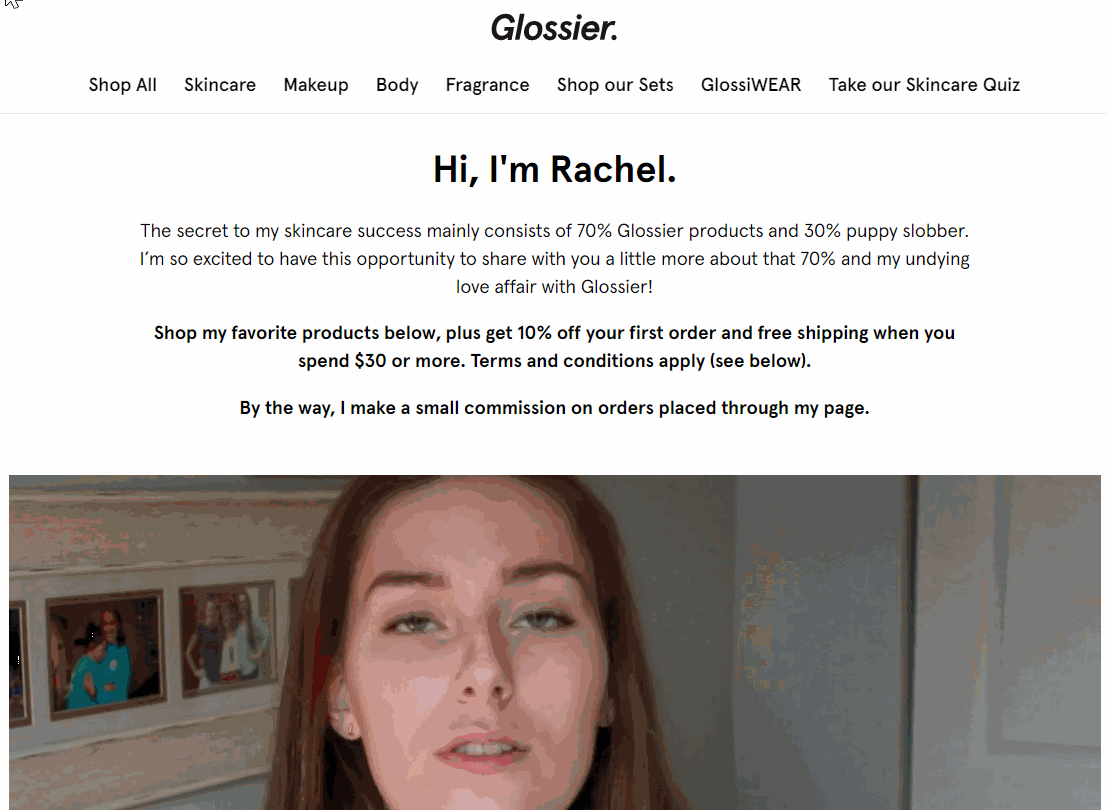
This way, Glossier controls its image while leveraging their passionate customers for added business.
3. Generating social proof at scale
The Glossier social team excels at engaging their audience and sourcing customer generated content (UGC) daily. Fans are encouraged to share their daily Glossier look.
You only need to look up #GlossierIRL on Twitter to see it:

And #GlossierGirl on Instagram:
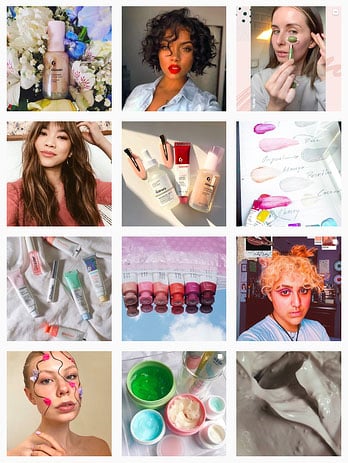
Here's the 2 key drivers behind Glossier's ability to generate mass UGC:
- The brand's pop-culture-savy, fun and approachable tone on all channels is aligned with their younger audience and gets their attention
- Glossier rewards that attention by replying to every mention and sharing customer content on all brand channels (social media, product pages, ad campaigns, newsletters...)
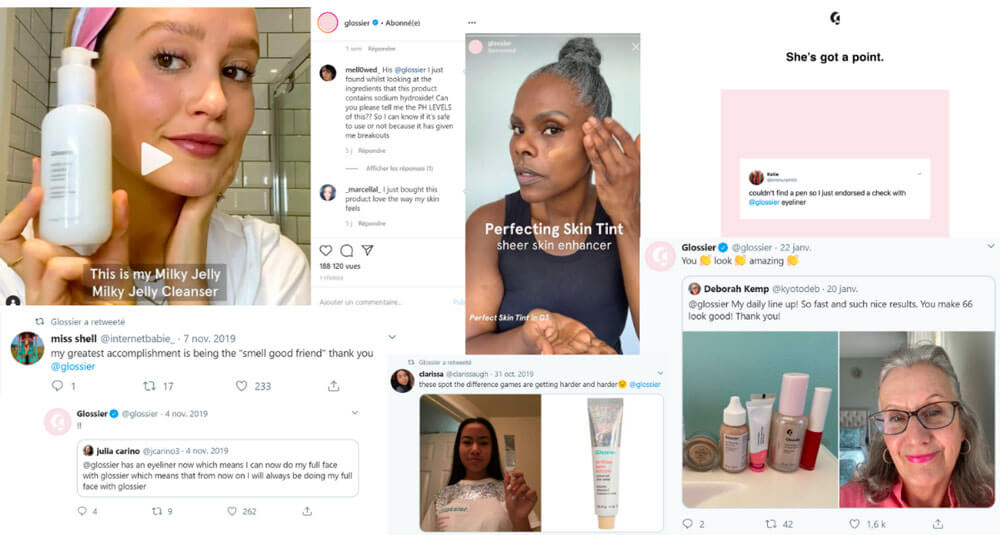
4. Clever use of customer tutorials & beauty routines
Tutorials are essential for any beauty brand. Not only does it showcase the product, it helps customers figure out how to make it work for them.
The Glossier blog started by posting beauty routines and #shelfies (where people post a picture of their top shelf with their favorite beauty and skincare products). It's what made the blog so successful in the early days.
No surprise then that the brand still heavily relies on sharing customers’ beauty routines and tutorials on social media:
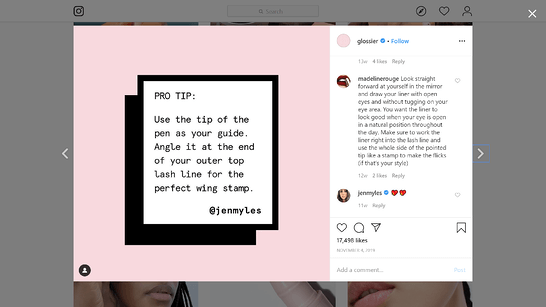
If we were Glossier, we'd add the best how-tos to product pages. It's an easy way to feature additional social proof on one of your most strategic assets.
5. Creating community-powered ad campaigns
Glossier actually goes beyond featuring their customers on their social channels: they include them in national ad campaigns. This echoes the company's number 1 rule for community: "Make the Consumer Feel Seen".
It also adds a layer of authenticity and additional social proof to the brand's ads.
(Read their other 3 rules for building an engaged community here, by their CFO Henry Davies)
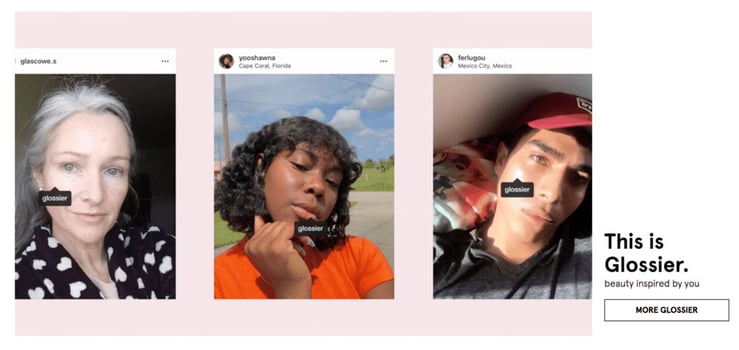
In short, the Glossier team is getting a lot of things right. Their community has been a crucial driver for acquisition and customer loyalty.
There’s a few more things we could have added like their smart use of reviews on product pages, their 18k member non-branded beauty community on Facebook… But we're sticking to 5 this time! With how fast they're moving, it's likely we'll have to revisit Glossier in a few months.
We’ll be back in a month, decoding a new brand community. In the meantime, you can read our post on how to get started and define your community project.


.jpg?width=800&name=Get%20the%20Community%20playbook%20(1).jpg)

.png)
